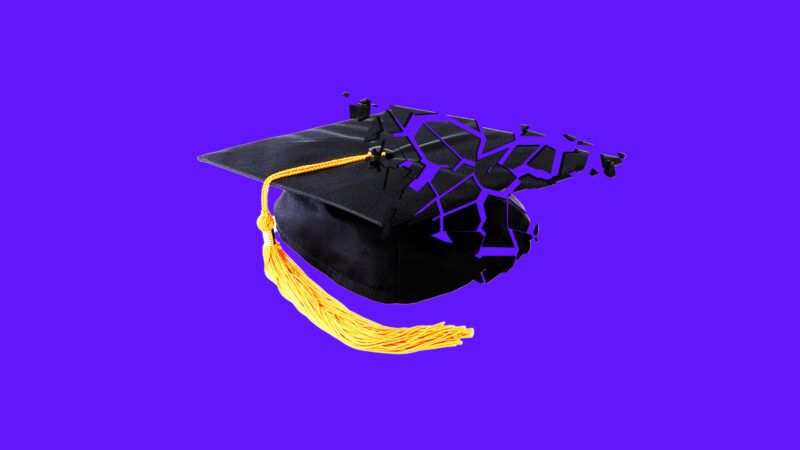COVID-19 Gutted College Attendance. Now, a Solid Labor Market Is Convincing More High School Grads To Skip It.
The number of high school seniors going on to attend college has plummeted in the past two years, deepening the already steady decline.

According to NBC News, there are 4 million fewer students enrolled in college than there were 10 years ago, and there has been a 7 percent drop in college attendance from 2016 to 2020.
"With the exception of wartime, the United States has never been through a period of declining educational attainment like this," Michael Hicks, director of the Center for Business and Economic Research at Ball State University's business school, told The Hechinger Report, an education nonprofit.
What caused this unprecedented drop? The COVID-19 pandemic played a clear role, and so does the robust labor market, which offers enticing jobs for recent high school graduates. While the dramatic national drop in enrollment began after the COVID-19 pandemic, several states have seen steady declines in enrollment prior to 2020. In Alabama, the college-going rate had declined 7 percent from 2014 to 2019, and in West Virginia, the 2019 college-going rate was 5 percent lower than in 2010.
However, while college-going rates were falling before 2020, college attendance numbers decelerated dramatically since the onset of the pandemic. In 2015, 65 percent of Indiana high school seniors went on to college. In 2019, the rate had declined by 6 percent. In 2020, the rate fell by another 6 percentage points, bringing the total of college-attending seniors to 53 percent. Tennessee's college-going rate decreased by almost 10 percent over a period of only three years, from 61.8 percent in 2019 to 52.8 percent in 2021.
While COVID-19 certainly played an outsized role in the drop in college attendance, with high school seniors wary of online school or unable to pay high tuition after their parents faced financial hardship, the pandemic doesn't tell the whole story. Despite a sharp drop-off in 2020, national college attendance didn't increase in 2021, which would have implied that students taking a COVID gap year had finally enrolled. In fact, attendance in 2021 dropped at nearly the same rate as the year before.
The COVID-19 pandemic, coupled with a bustling labor market, seems to be the main thrust behind why more and more students are skipping out on college. "The change from in-person to online [college instruction] caused a reconsideration for some people of what it is that [they're] paying for when it comes to college, and then at the same time or shortly thereafter, we had the really rapid recovery in the labor market," Beth Akers, a senior fellow at the American Enterprise Institute, tells Reason. "My hope is that colleges are going to have to reconsider what it is that they're selling and try to be more sensitive to their students' needs and wants."
According to Akers, with many companies offering solid salaries and not requiring college degrees, many high school graduates are choosing to work rather than amass student debt for a degree they now seem to doubt will help them earn a better wage.
This dramatic decline in college enrollment could be the incentive needed for colleges to reduce their prices. Students are no longer buying the promises made in glossy brochures or by college counselors. Schools will either need to lower their prices or provide a product that is worth the hefty investment made by students and their families.
"I'm really hoping this fall in demand will wake colleges up to this fact and drive them to make some changes in what it is they're doing," says Akers, who added that this change "will be both good for individual students and good for our economy, creating a better pipeline for workers to fill the real jobs we have in place."



Show Comments (116)